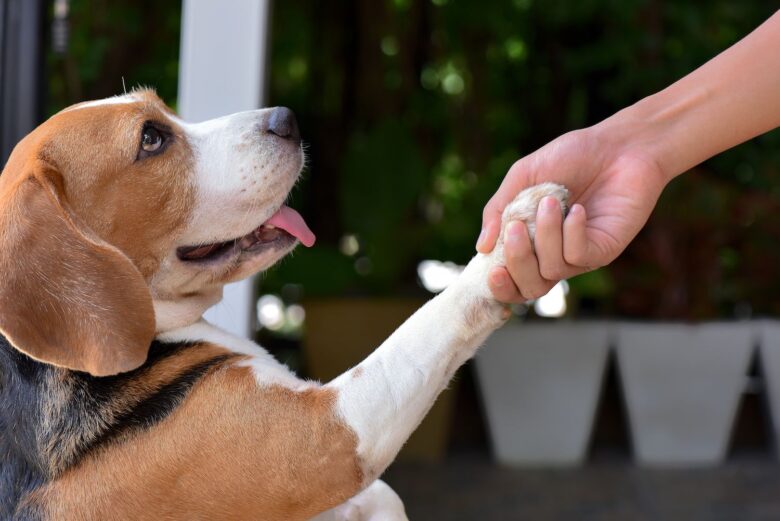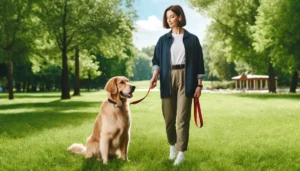For anyone who wants to have a good relationship with their dog, it is important to understand and correct their dog’s behaviour. Dogs bring joy, friendship and unconditional love into our lives. However, managing behavioural problems is an important part of pet ownership and can protect the health of the dog and its family. This article discusses good ways to manage your dog’s behaviour and emphasises the importance of understanding, patience and consistency when correcting your dog.
1. How to Understand Dog Behavior:
Before using corrective methods, it is important to understand why your dog does the things he does. Just like humans, dogs’ behaviour is influenced by their environment, training methods and genes. Dogs often do bad things, such as barking excessively, eating, being mean, jumping on people, etc.
- What is the Role of Communication?
Dogs talk to each other through their movements. Understanding why people do what they do can help you deal with problems more effectively. A dog that chews on furniture may feel anxious or not have enough to do. Identifying these causes is the first thing you should do to resolve the problem.
2. Effective Corrective Techniques:
Changing a dog’s behaviour requires care, perseverance and the right tools. To help you through the process, here are some tips:
- Support Good Behaviour
Positive rewards are a great way to train your dog. This method uses treats, praise, or play to encourage the dog to repeat the desired behaviour. It’s important to reward your dog immediately after he does what you want him to do so he can make the connection between the behaviour and the reward.
- Stick to Your Daily Routine
It is important to be consistent with corrections and commands. Make sure that everyone in the household follows the agreed-upon rules and orders. If you are inconsistent, your dog may have difficulty understanding what you want him to do.
- Divert Attention and Look Away
When your dog does something you don’t want him to do, it can be helpful to guide him towards good behaviour. If your dog starts chewing toys, give him a chew toy instead of a shoe. This stops them from doing things they shouldn’t do and also teaches them what is good to chew.
- Timeout Method
Giving your dog a break can help him break bad habits, such as barking or jumping too much. This means removing the dog from the environment and letting him calm down on his own for a while. Timeouts should be done without anger and in a safe place where the dog cannot do what he is doing.
- Do not Use Corporal Punishment
When dogs are hit, they can become fearful, anxious and aggressive. Many dogs learn to fear their owners or the place where the treatment is being performed, rather than learning from it. Trust-based friendships are stronger when there is positive reinforcement and understanding.
3. How to Understand Changed Limits:
While it is important to correct behaviour, it is also important to understand how far correction can go. When it comes to dog rescue, certain behaviours may be ingrained or related to past negative experiences. In these cases, you may need the help of a qualified dog trainer or behaviourist.
4. Professional Help:
If behavioural problems don’t go away, don’t be afraid to seek professional help. A qualified dog trainer or behaviourist can provide you with a personalised plan and support to help you and your dog through difficult times.
5. Summary:
Controlling and correcting your dog’s behaviour is an ongoing process that can make your relationship with your dog stronger. You can teach your dog to be a well-behaved family member by helping him understand why he does the things he does and by using effective punishment methods. Remember that love, patience and consistency are all important parts of teaching your dog. If you take the right steps, you can maintain a happy, healthy bond with your furry friend for years to come.
FAQs:
Q1. What is positive reinforcement? Why is it important in dog training?
Positive reinforcement is a training method in which desired behaviour is rewarded to encourage the dog to repeat that behaviour. This is important because it strengthens the bond between owner and dog, creates a positive learning environment and helps dogs associate good behaviour with positive outcomes, making them more likely to behave appropriately.
Q2. Why is consistency so important when correcting your dog’s behaviour?
Consistency is key when training dogs because it helps them understand what is expected of them. Using the same commands and maintaining consistent rules and boundaries between all family members can minimise confusion and allow the dog to learn and comply with desired behaviours more quickly.
Q3. How can redirection and distraction help correct unwanted dog behaviour?
Redirection and distraction are techniques to stop unwanted behaviour by directing the dog’s attention to an appropriate alternative. For example, if a dog is chewing something he shouldn’t, offering a chew toy can redirect his behaviour towards something acceptable by teaching him what is and isn’t allowed.
Q4. What are the possible effects of corporal punishment on dogs?
Corporal punishment can cause fear, anxiety and even aggression in dogs. It can damage the trust between dog and owner, making the dog more anxious or defensive in similar situations in the future. Positive reinforcement is a more effective and humane method of training and correcting behaviour.
Q5. When should you consult a professional dog trainer or behaviourist?
If persistent behavioural problems occur that cannot be resolved with standard correction techniques, a professional dog trainer or behaviourist should be consulted. This is especially important for behaviours arising from fear, anxiety or aggression, as professionals can provide tailored strategies and support to address these issues safely and effectively.


